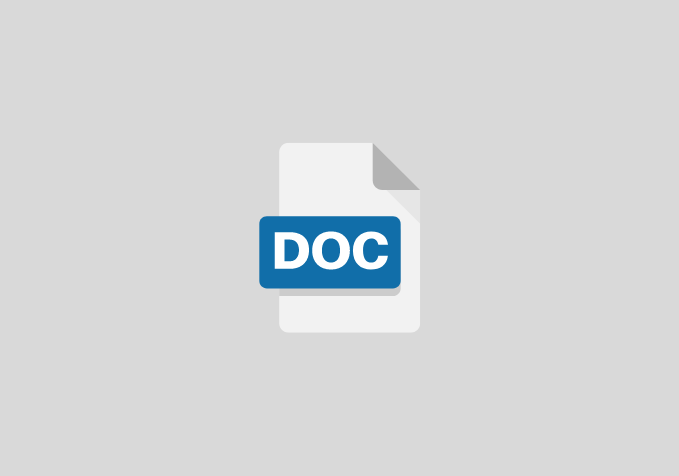A proposal on effective communication as a tool for achieving organizational goals and objectives (case study Ogun state)
CHAPTER ONE
OBJECTIVES OF THE STUDY
The objectives of the study constitute the following;
- To assess the effect of communication in the field of management.
- To identify the existing communication barriers in an organization.
- To understand the objective of communication and the communication system.
- To find out what communication is all about, how it is done. What instruments are used and what qualities can make a system of communication are effective in an organization.
- To identify the problems of ineffective communication and to suggest and recommend possible solution so as to achieve a better communication network in an organization.
CHAPTER TWO
Related literature review
Effective Communication
Effective communication occurs when its outcome is the result of intentional or unintentional information sharing, which is interpreted between multiple entities and acted on in a desired way. When the desired effect is not achieved, factors such as barriers to effective communication are explored, with the intention to discover how the communication has been made ineffective. Communication in an institution of learning is the exchange and flow of information and ideas from one person to another. It involves a sender transmitting an idea, information, or feeling to a receiver. As observed by and, effective communication occurs only if the receiver understands the exact information or idea that the sender intended to transmit. Many of the problems that occur in an organization are either the direct result of people failing to communicate or using processes, which lead to confusion and causing good plans to fail. Effective communication is a very essential tool in administration.
CHAPTER THREE
RESEARCH DESIGN AND METHODOLOGY
The researcher used descriptive research survey design in building up this project work. The choice of this research design was considered appropriate because of its advantages of identifying attributes of a large population from a group of individuals. The design was suitable for the study as the study sought to effective communication as a tool for achieving organizational goals and objectives.
METHOD OF DATA ANALYSIS
The researcher will employ oral and direct interview in administering this research questions. Responses from the respondents were needed unlike questionnaires, which is less rewarding due to late receipt and loss of responses from respondents. The method of data analysis that will be used by the researcher is the simple percentage. More so, percentage and degrees of the responses will also be used in the analysis. Here, the ratio of those whose responses were not in the affirmative will be found and conclusions will be drawn there upon. Representations of the level of responses will be made in tabular form. The Statistical Package for Social Sciences (SPSS) software will be used to test the hypotheses.
References
- Robbins, S., Judge, T., Millett, B., & Boyle, M. (2011). Organisational Behaviour. 6th ed. Pearson, French’s Forest, NSW.
- Trevithick. P. (2003) ‘Effective relationship-based practice: a theoretical exploration’, Journal of Social Work Practice. 17(2), 163-176
- Harper, D. “communication”. Online Etymology Dictionary. Retrieved 2013-06-23.
- McLeod, J. (2007) Counseling Skills, Maidenhead, Open University Press
- Karen K and Kamyab S (2004) Millennials in the Workplace: A Communication Perspective on Millennials’ Organizational Relationships and Performance. Journal of Business and Psychology, 25(2): 225–238.
- Fisher, D. (2000). Communication in organizations (2nd ed.). New York, NY: Jaico
- Einsenberg, E. M., & Goodall, H. L., Jr. (1993). Organizational communication: Balancing creativity and constraint. New York, NY: St. Martin’s Press Exeter, Learning Matters
- Koprowska, J. (2008) Communication and Interpersonal Skills in Social Work, 2nd edn, Wiley Online LibraryCentre for Teaching Excellence . “Effective Communication: Barriers and Strategies.” N.p., 2013. Web. 5 Jan 2013. Available at http://cte.uwaterloo.ca/teaching_resources/tips/effective_communication_barriers_and_strategies.html.
- Infante, D., Rancer, A., & Womack, D. (2003). Building communication theory (4th ed.). Long Grove, IL: Waveland Press, pg. 356
- Onah R.C ., (2005). Public Administration, Great AP Express Publishers Limited
- Lefevre, M. (2008) ‘Assessment and Decision-making in Child Protection: Relationship-based Considerations’, in M. Calder (ed.), The Carrot or the Stick? Towards Effective Practice With Involuntary Clients, Lyme Regis, Russell House
- Nuttall, C and Houghton M .(2010). Cambridge IGCSE Business Studies . 2nd ed. Cambridge : Cambridge University Press
- Yamane, T.. (1967). Statistics: An Introductory Analysis, 2nd Edition, New York: Harper and Row
- Barnlund, D. C. (2008). A transactional model of communication. In. C. D. Mortensen (Eds.), Communication theory (2nd ed). New Brunswick, New Jersey: Transaction.


